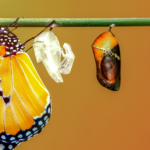1. Stranger Carried a Senior Hiker for Hours on His Back After She Fell and Couldn’t Walk
A woman who broke her leg while hiking was rescued by a trio of strapping young whipper snappers, who carried her all the way down the mountain on their backs.
Even realizing she’d be alone for the 3.2-mile trek, Ursula Bannister had been confident of getting to the place where she scattered her mother’s ashes 23 years ago; she had gone up many times before. For anyone who’s taken the trail to High Rock Lookout, a viewpoint near Ashford in Washington, they’ll know it’s hard and steep.
As the 79-year-old Bannister predicted, she made it to the top, left some flowers, and began heading back down. Catching a hole in the trail bed with her foot, she fell forward hard and by the time she turned herself right side up, she saw her foot was pointing the wrong way.
In pain she cried out for help, and before long a group of 3 young hikers came to her side and called 911. A search and rescue team said they’d be there in 5 hours, discouraging everybody.
20-year-old Troy May, an Air Force Airman, was hiking up to the lookout that day with his fiancé and a friend Layton Allen. Bannister asked them if they had any painkillers, to which they replied they did not, and realizing the woman had nothing to help her strap in for 5 upcoming hours of agony, May took action.
2. Stem Cells Reverse Woman’s Type-1 Diabetes–a World First
“I can eat sugar now,” said a woman from Tianjing, China, who recently became the first human to have their type-1 diabetes cured through a stem cell procedure.
Using the patient’s own stem cells, the results offer hope of limitless treatment options for type-1 diabetes, where special insulin-producing cells were previously needed from a donor.
Unlike type-2 diabetes which can be developed through poor diet and lifestyle choices, type-1 diabetes develops on its own in certain humans.
Type-1 diabetes is classified as an autoimmune disorder, as the immune system attacks islet cells in the pancreas responsible for producing insulin, a vital metabolic signaling hormone that instructs muscle tissues to absorb excess glucose and other sugars out of the bloodstream.
Treated with exogenous insulin and a mixture of immunosuppressants, the only thing like a cure is an islet-cell transplant, for which there are not anywhere near enough donors to meet the demand.
3. Virginia State Parks Install Viewfinders for Colorblind Visitors–Just in Time for Autumn Leaves
In preparation for leaf-peeping season, Virginia State Parks have equipped all 43 managed properties with special viewfinders for the colorblind.
The lenses in the viewfinders allow those with red-green Color Vision Deficiency (CVD) to experience the full breadth of color inherent in the autumnal leaf displays that Virginia is famous for.
Red-green CVD is the most common form worldwide, affecting around 300 to 350 million people, and 13 million Americans. While people with normal color vision see over one million shades of color, those with red-green CVD are estimated to see about 10% of hues and shades.
To them, colors containing red and green can appear dull, washed out and indistinguishable—rendering fall forests with all their luscious reds, delicious oranges, and mellow yellows one big sepia mass.
The viewfinders, made by SeeCoast Manufacturing, are equipped with special lenses from another firm called EnChroma designed to help those with CVD experience an expanded range of visible color.
“This initiative underscores Virginia’s commitment to enhancing outdoor experiences for all visitors and sets a new standard for state parks nationwide,” said Matt Wells, director of the Virginia Department of Conservation and Recreation, which manages Virginia State Parks. in a statement. “We’re proud to play a role in opening up a world of vibrant color for colorblind individuals to experience nature like never before.”
The installation began in 2023 in Natural Tunnel State Park, an initiative that was led by Chief Ranger Ethan Howes who is himself colorblind. The other 43 parks would receive their viewfinders this year, which started on July 26th with a ceremony at Pocahontas State Park in which 6 colorbind Virginians were invited to try them out.






